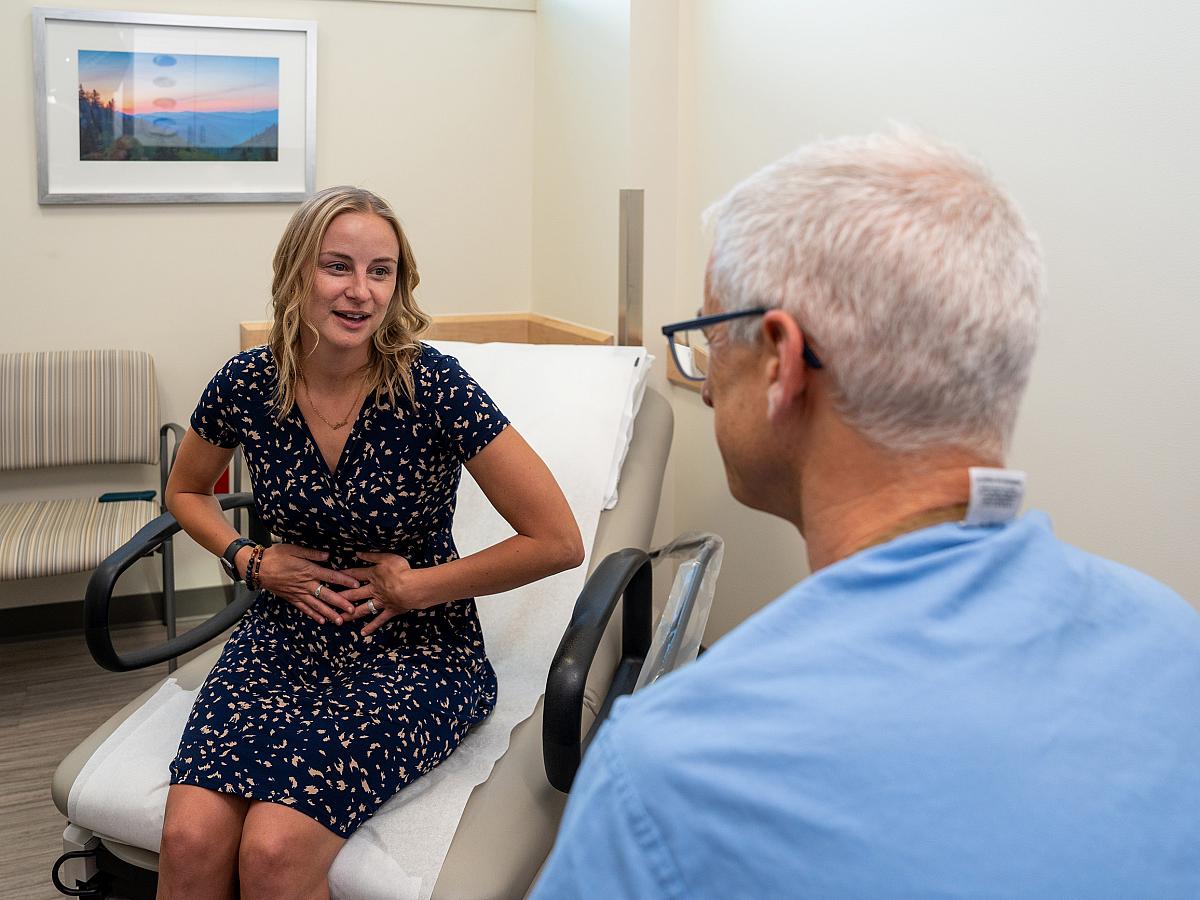
What Is a Hysterectomy?
A hysterectomy is a surgical procedure to remove the uterus. The uterus is the part of a woman’s reproductive system where a baby grows, also known as the womb. The uterus can be removed on its own, or it can be removed with:
- the cervix,
- one or both ovaries, or
- one or both fallopian tubes.
If you have your cervix, ovaries, fallopian tubes, and uterus removed, the procedure is called a total hysterectomy.
Why Choose University of Utah Health?
At U of U Health, our Women’s Health Services focus exclusively on care for women of all ages to help improve your overall wellness. We take a whole-person approach to treatment to give you coordinated care that improves your quality of life.
Our team performs minimally invasive and abdominal hysterectomy surgery for women who need to have their uterus removed. Many of our gynecologists have specialized training and fellowships in minimally invasive hysterectomy surgery so they are able to perform these procedures safely and effectively.
Who Is a Candidate for a Hysterectomy?
Before a hysterectomy, you will meet with a gynecologist. They will discuss your medical history and order tests to determine the reason why you may need a hysterectomy.
The most common reasons for a hysterectomy include:
- fibroids that cause pain or heavy menstrual bleeding, anemia, or bladder pressure;
- endometriosis;
- uterine prolapse (your uterus moves down into your vagina);
- chronic pain in your uterus that cannot be treated in other ways; or
- uterine bleeding that cannot be controlled with medication.
Hysterectomies also treat gynecologic cancer (cancer in the uterus, ovaries, fallopian tube, or cervix). This type of hysterectomy is done by a gynecologic oncologist at Huntsman Cancer Institute.
Hysterectomy Benefits and Risks
Hysterectomy surgery has several of the following benefits:
- little or no bleeding,
- little or no pain from uterine fibroids, endometriosis, or other conditions,
- better quality of life,
- no risk of cancer in the organs that are removed, and
- no risk of uterine prolapse.
The risks of hysterectomy include:
- bleeding;
- infection;
- early onset of menopause;
- injury to the organs surrounding your uterus (e.g., bladder, bowel, rectum, ureter, and nerves); or
- blood clot in your legs or lungs,
Since a hysterectomy removes your uterus—the place where a baby grows—you will not be able to become pregnant in the future. If you want to become pregnant, talk to your gynecologist about your family plans before making your decision to have a hysterectomy.
Preparing for Your Hysterectomy
You will be put to sleep under general anesthesia before we begin the procedure. You will have a pre-operative visit with your surgeon and anesthesiologist to make sure it’s safe for you to have surgery. During this visit, you will discuss any allergies and medications you are taking.
Your surgeon will instruct you to:
- stop or adjust the dose of any of your medications before your surgery.
- stop eating and drinking at midnight the night before your surgery.
- stop smoking at least 24 hours before your surgery if you smoke.
Other preparations to consider include post-operative recovery and care. You will need to take several weeks off work to recover from surgery. If you have young children at home, you should arrange to have someone help you care for them for up to six weeks after surgery.
Find a Gynecologic Surgeon
Hysterectomy Procedure
You will be under anesthesia for the entire surgery. Your surgeon will remove your uterus and any other reproductive organs (cervix, ovaries, fallopian tubes) that were planned for removal. If any incisions (cuts) are made, we will stitch them up and cover them with bandages to heal. The procedure usually takes about 90 minutes, but may range from one hour to more than three hours. It will take longer in complex cases with advanced endometriosis or scar tissue
There are several different ways that we can perform a hysterectomy. Vaginal and laparoscopic hysterectomies are both minimally invasive procedures.
Vaginal Hysterectomy
This procedure is done through your vaginal opening. You will heal quicker and experience less pain after this procedure compared to an abdominal hysterectomy because it does not require any incisions (cuts). Not everyone is a good candidate for a minimally invasive hysterectomy. For example, women may not be candidates for this procedure if they have:
- a narrow pubic arch,
- a small vagina that does not allow for access to the surgical area,
- a uterus with a size or shape that makes it difficult to remove with minimally invasive techniques, or
- significant endometriosis and scar tissue that needs to be treated at the same time.
Laparoscopic Hysterectomy
We will make up to three small incisions (cuts) in your abdominal area and insert small instruments to remove your uterus. Laparoscopic procedures help us see the inside of your abdomen better and help us treat conditions like endometriosis and ovarian cysts. If you have scar tissue from surgeries or C-section deliveries, your doctor may use a laparoscopic procedure to disconnect your uterus and then remove it through your vagina.
Abdominal Hysterectomy
This procedure also removes your uterus through an incision (cut) in your abdomen, similar to a C-section incision that usually goes across the bikini line of your lower belly. This procedure is best if you have a large uterus, large uterine fibroids, or other large masses that cannot be safely removed with laparoscopic surgery.
Hysterectomy Aftercare
After the surgery, you will be taken to a post-operative recovery room where you will wake up as the anesthesia wears off. Our nurses will provide medication to control any pain, and give you water and snacks, if desired.
If you had a minimally invasive or laparoscopic hysterectomy, you will either go home the same day as your surgery or the following day. For an abdominal hysterectomy, you will stay in a hospital room for two nights to recover.
Schedule a Consultation
To schedule an appointment with a gynecologic surgeon for a hysterectomy, call 801-213-2995. You do not need a referral from your physician to see a U of U Health gynecologist.
Keep in mind that some insurance plans have restrictions on providers who are covered in your network. Contact your insurance carrier with any questions about your coverage.





